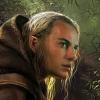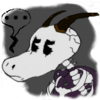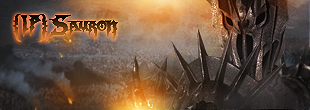Natural Object Placement:
Creating authentic natural landscapes
When making your map, your natural object placement will undoubtedly play a huge part in the look and feel of your map. It is something that many mappers struggle with, and something which is often neglected. It is a huge topic, and this tutorial will barely scratch the surface of how and why you might place objects, but hopefully it'll help you add an extra kick to your maps. Keep in mind though, that all the awesome placement in the world won't help you if your texturing and terrain aren't up to scratch.
Generally, natural objects come down to trees, rocks and grass:
When placing my trees, i always use the Grove tool, rather than the Object Place tool. The grove tool allows you automatically randomise scale and rotation, which is extremely useful in creating realistic clumps of trees. Identically placed trees are very unrealistic, and stick out like a sore thumb. For example:


In Steve Campen (aka High Elven Lord)'s Lithlad map, the identical placement of trees lets down what is otherwise an excellent map. To the right, an example of how it could be improved.
By using a variety of tree types, and creating random placement, you can get a much more natural look. Because really, trees don't grow perfectly. Instead, create varied clumps of trees by keeping them irregularly spaced and positioned. In the same way that you don't want identical types of tree, you also don't want identical spacing between trees, or identical placement of trees. Random is the key word here.


Trees growing scattered apart in a light wood. On the right, my Eryn Vorn map which is a forest map comprised mainly from trees.
Be equally careful not to use too many trees, as too many different types will seem unrealistic and over the top. Around five is probably as many as you want in any one spot. Single trees in the middle of nowhere tend to look strange, so try and place them at least in groups of two, or with other single trees nearby. And please think again before using that elven wood tree, it's almost always painfully obvious whenever you see it on a map. Seriously. Just don't.
Rocks are a bit less obvious and thus a bit easier to work with. However, the same sorts of principles apply - keep them varied and irregularly placed. Like trees, rocks tend to look better in clumps, rather than big single boulders. Similarly, the more spiky varieties of rock tend to look more natural near cliffs, rivers, or in forests. Experiment with a variety of different rock objects, z-height and scale to create some interest. Try and combine a few different rock objects to create more unique rock formations.


On the left, a rocky scree slope with various sizes of rock scattered haphazardly across the terrain. On my Dunland map (right), the texture i've used helps to blend the rock into the terrain .
Using a semi-rock texture can really add a visual depth to your rocks, especially if you can find a texture that matches your rock objects. Make sure you use the Align to Terrain option to avoid floating rocks. If you create large-scale rock formations, make sure you paint impassable terrain to avoid units walking through them in-game.
Grass and shrubs are even less noticeable - until they're not there. They definitely add a certain depth to your object placement, and to your map in general. Grass and shrubs tend to look best either clumped next to other objects, or widely spaced out on open terrain. Personally, i find the less noticeable types of shrubs work the best, as they tend to blend in with the terrain and other objects.


You may choose to represent a grassy plain with texturing rather than objects, but grass can be used to contrast against other objects such as rocks or ruins. On the right, Snoopyzero's Vales of Celduin map.
Ironically, grass and shrubs are really just there to complement your other natural objects, rather than actually look like fields of grass - as that's where your grass texturing comes in.
Really though, it's the combination of all three that is the most realistic. Try and include at least two of the three types (trees, rocks or grass) whenever you place objects. Doing so will create a lot more depth to your objects and your map in general. For example, having grass or small trees springing up from the cracks between rocks can look very effective. Similarly, try and scatter rocks and boulders on your forest floor to create some variety between the clumps of trees.



But if you keep looking at real-life examples and you keep practising, your mapping is bound to keep improving.
Well that's it for this tutorial, i hope you found it useful (even if it was only a little)
Edited by _Haldir_, 06 July 2010 - 04:21 AM.


















